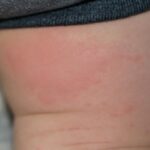Nonalcoholic fatty liver disease (NAFLD) and nonalcoholic steatohepatitis (NASH) are conditions affecting the liver, often linked to metabolic issues. Diagnosing these conditions accurately is crucial for effective management and care. This article explains how doctors differentiate between NAFLD and NASH during diagnosis, detailing the methods and tests employed.
Initial Assessment: Medical History and Physical Exam
The diagnostic journey for NAFLD and NASH begins with a thorough evaluation by a healthcare professional. This initial phase involves gathering your medical history and conducting a physical exam.
Medical History Details
Your doctor will start by asking detailed questions about your medical history. This includes exploring pre-existing health conditions that increase your susceptibility to NAFLD, such as:
- Type 2 diabetes
- Obesity or overweight
- High blood pressure
- Abnormal cholesterol or triglyceride levels
- Metabolic syndrome
Furthermore, lifestyle factors play a significant role in NAFLD development. Your doctor will inquire about:
- Dietary habits, particularly high sugar intake and sugary beverage consumption.
- Levels of physical activity and sedentary behavior.
It’s also essential to rule out other potential causes of liver disease. Therefore, your doctor will ask about:
- Alcohol consumption, to differentiate between NAFLD and alcohol-associated liver disease.
- Medications or toxins that could affect the liver.
- Viral hepatitis or other liver conditions.
Physical Exam Findings
A physical exam is the next step in the diagnostic process. During the exam, your doctor will:
- Measure your height and weight to calculate your body mass index (BMI).
- Palpate your abdomen to check for an enlarged liver, a potential sign of NAFLD or NASH.
- Look for signs of insulin resistance, such as acanthosis nigricans – darkened skin patches, often found on knuckles, elbows, and knees.
- Assess for signs of cirrhosis, advanced liver scarring that can be a complication of NASH. These signs may include an enlarged spleen, ascites (fluid buildup in the abdomen), and muscle wasting.
Diagnostic Tests: Differentiating NAFLD from NASH
While medical history and physical exams provide valuable clues, further tests are necessary to confirm a diagnosis of NAFLD or NASH and to distinguish between the two. These tests fall into three main categories: blood tests, imaging tests, and liver biopsy.
Blood Tests: Liver Enzymes and Scores
Blood tests are a routine part of NAFLD and NASH diagnosis. Elevated levels of liver enzymes, specifically alanine aminotransferase (ALT) and aspartate aminotransferase (AST), can raise suspicion of NAFLD.
Furthermore, doctors may calculate scores like FIB-4 or APRI using routine blood test results. These scores help to estimate the degree of liver fibrosis and can assist in ruling out advanced scarring. Additional blood tests may be conducted to exclude other liver conditions that could cause elevated liver enzymes.
Imaging Tests: Detecting Liver Fat and Fibrosis
Imaging tests are crucial for visualizing the liver and detecting fat accumulation. Commonly used imaging techniques include ultrasound, CT scans, and MRI. These tests can effectively identify steatosis (fatty liver) but have limitations in distinguishing between NAFL and NASH, as they cannot directly detect inflammation or fibrosis. However, in cases of cirrhosis, imaging may reveal nodules or lumps in the liver.
Elastography, a newer imaging technique, is increasingly used to assess liver stiffness, which can indicate fibrosis. Different types of elastography include:
- Vibration-controlled transient elastography (VCTE), a specialized ultrasound-based method.
- Shear wave elastography (SWE), another ultrasound technique to measure liver stiffness.
- Magnetic resonance elastography (MRE), an MRI-based method for assessing liver stiffness with high accuracy.
Liver Biopsy: The Definitive Diagnosis
Liver biopsy is the most definitive test for diagnosing NASH and assessing the severity of liver damage. It is the only method that can reliably detect inflammation and the stage of fibrosis, allowing for a clear differentiation between NAFL and NASH. While elastography can detect advanced fibrosis, liver biopsy can identify fibrosis at earlier stages.
However, liver biopsy is an invasive procedure and is not recommended for all individuals suspected of having NAFLD. Doctors typically recommend a liver biopsy in cases where:
- There is a higher likelihood of NASH with advanced fibrosis.
- Other tests suggest advanced liver disease or cirrhosis.
- There is a need to rule out other liver diseases.
During a liver biopsy, a small tissue sample is extracted from the liver using a needle. A pathologist then examines the tissue under a microscope to identify signs of inflammation, hepatocyte ballooning (liver cell injury), and fibrosis, which are characteristic features of NASH.
Conclusion
Diagnosing NAFLD and NASH involves a multi-faceted approach, starting with a comprehensive medical history and physical examination, followed by blood tests and imaging. While these methods can strongly suggest NAFLD and assess liver fat, a liver biopsy remains the gold standard for definitively diagnosing NASH and evaluating the extent of liver damage. Understanding these diagnostic steps is vital for both patients and healthcare providers in managing these prevalent liver conditions effectively.
Last Reviewed April 2021
This content is provided as a service of the National Institute of Diabetes and Digestive and Kidney Diseases (NIDDK), part of the National Institutes of Health.

